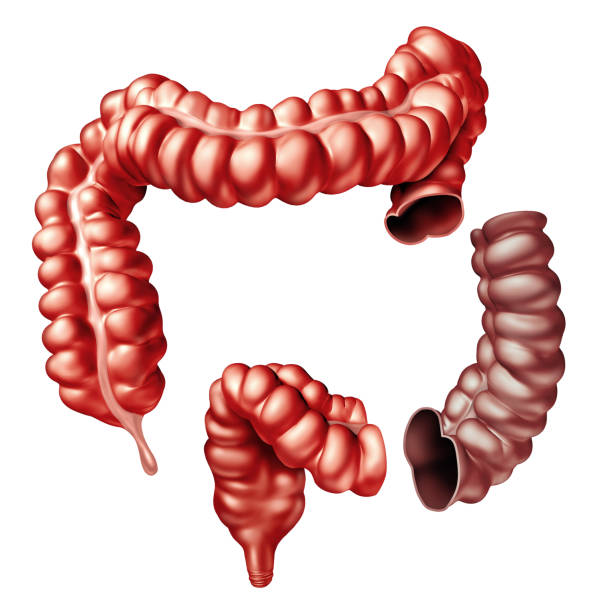Refractory celiac disease is a form of celiac disease that is resistant to treatment. People with this condition exhibit a high amount of proinflammatory cytokines. These chemicals are responsible for communication between cells in the immune system. Refractory celiac disease patients have elevated levels of proinflammatory cytokines, including interleukin-15 and interferon-gamma. This is due to the damage that has occurred to the lining of the intestine.
How do you treat refractory celiac disease?
Refractory celiac disease is a relatively uncommon condition that requires a different approach to treatment. Although gluten is still present in the diet, it is in microscopic amounts that cause recurrent symptoms. While most cases of celiac disease respond to a gluten-free diet, some patients do not respond to gluten-free diets at all, leading to malnutrition.
The single most important treatment for celiac disease is a gluten-free diet. However, about 0.5 percent of people who have the condition will develop refractory disease. In these cases, the gluten-free diet will not provide adequate relief. In addition, refractory celiac disease can lead to secondary diseases. These can include lymphoma, which affects certain inflammatory cells. As such, current diagnostic techniques include analyzing the patient’s blood and tissues obtained during gastroscopy.
Treatment for refractory celiac disease depends on the severity of a person’s disease. The disease may be classified into two categories: type 1 and type 2. Type 1 is characterized by the absence of apoptosis control in the lymphocytes.
How do you test for refractory celiac disease?
Refractory celiac disease has several symptoms that mimic the symptoms of untreated celiac disease, but they are more severe and often accompanied by anemia and malnutrition. Doctors will likely use an endoscope to examine the intestine to see if there are any ulcerations or signs of inflammation. They may also order other imaging tests to rule out other diseases.
Refractory celiac disease is extremely rare. Only 1.5 percent of those with celiac disease develop this condition. However, it is important to seek further testing if you continue to experience symptoms after taking a gluten-free diet for more than a year. If you experience these symptoms, you should see a doctor immediately to make sure that you do not have another illness.
There are two types of refractory celiac disease. The most common is Type I, while Type II is rarer. The difference between these two types of refractory celiac disease is based on the results of special tests using white blood cells, or T-cells, from the small intestine. Oftentimes, a patient will have years of symptoms before their condition is diagnosed.
What is last stage of celiac disease?
If you are suffering from the symptoms of celiac disease, you will want to visit a doctor for a proper diagnosis. Your doctor will look at your gastrointestinal function and blood tests to see if you have the disease. In some cases, a biopsy is required to confirm your diagnosis. This test is performed to check whether your villi are damaged and may be causing your symptoms.
People with this disease have genes that make them sensitive to gluten. They also have a heightened risk of contracting the disease if they have a family history of it. In the United States, more than 2 million people have been diagnosed with the disease. That means that one in every 133 people have it. Symptoms are hard to recognize in the beginning, as they can mimic those of other digestive conditions. Treatment for celiac disease involves avoiding gluten and following a gluten-free diet.
Untreated celiac disease can cause severe symptoms. The condition can affect the gastrointestinal system, neurological system, musculoskeletal system, and skin. In women, it can also cause miscarriage and infertility. If not treated, it can also lead to other autoimmune diseases such as lymphoma.
What are the two types of celiac disease?
There are two types of refractory celiosis: type 1 and type 2. Type 1 refractory celiac disease is a relatively rare complication of celiac disease and is associated with an increased risk of certain types of cancer. Type 2 refractory celiac disease usually responds to the GFD but can recur after the initial response. These patients generally require aggressive nutritional therapy and alternative pharmacological treatments.
Refractory celiac disease is relatively rare, affecting less than one percent of patients with celiac disease. The ongoing symptoms are usually the result of microscopic amounts of gluten present in the diet. A healthcare provider may diagnose refractory celiac disease if the patient has symptoms of gastrointestinal malabsorption despite strict adherence to the GFD.
Type 1 refractory celiac disease is rare and is associated with a high mortality rate. Treatments for this form of the disease remain controversial. In one case, a 54-year-old man with refractory celiac disease was treated with azathioprine and budesonide. The journal International Journal of Celiac Disease offers a concise review of the clinical management of refractory celiac patients.
Is refractory celiac rare?
Refractory celiac disease is a complication of celiac disease that can lead to anemia and severe pain. It is rare and occurs in older people and women. It is often associated with venous thromboembolism, or another autoimmune disorder.
The refractory form of celiac disease is rare, affecting less than one percent of people with diagnosed celiac disease. There are 1.5 million people in the US who have celiac disease, but only approximately 15,000 people suffer from refractory celiac disease. It tends to strike women more than men and is rare before age 30. Most people diagnosed with RCD are in their fifties or older.
Despite its rarity, refractory celiac disease is a complication of celiac disease that can lead to an increased risk for certain types of cancer. It is thought to affect between 0.3 percent and four percent of coeliac patients. In addition to a gluten-free diet, drug treatments may be necessary in some cases. These include immunosuppressive drugs and steroids. These medications must be monitored closely. During these treatments, patients should adhere to a gluten-free diet as strictly as possible.
What triggers celiac disease later in life?
While celiac disease (CD) remains a challenging condition, recent advances in the field have increased our understanding of its diagnosis, management, and therapeutic options. While the exact cause of the disease remains a mystery, certain environmental and genetic factors are believed to play a role in the development of the disease.
In celiac disease, the small intestine is affected. It manifests as malabsorption and villus atrophy. The disease generally improves with a gluten-free diet, but it can recur if gluten is reintroduced. There are many names for the disease, including celiac sprue, gluten-sensitive enteropathy, and celiac disease.
The disease’s progression is complicated by the presence of a clonal immune cell population in the intestine. These cells are found under normal physiological conditions, but under a faulty environment, they become inactive and may grow to an uncontrolled size. In some cases, this abnormal lymphocyte population can evolve into aggressive overt EATL.
Does celiac worsen with age?
Although the exact cause of celiac disease is still unclear, it is believed to be related to the immune system. The immune system is comprised of lymphocytes, which make up about 25% of the white blood cells in the body. They are responsible for assisting the body’s immune system by performing various functions. T-cells are a type of white blood cell that is activated when it comes in contact with gluten.
Refractory celiac disease is characterized by an increased level of cytokines, which are small proteins that regulate the communication between immune system cells. Studies have shown that the immune response of patients with refractory celiac disease increases the production of proinflammatory cytokines like interleukin-15 and interferon-gamma. This may be due to damage to the intestinal lining.
However, refractory celiac disease is rare among adults and almost never seen in children. The real incidence of RCD is difficult to calculate because of the lack of reliable data. However, one study found that 1.5% of celiac disease patients develop refractory celiac disease. However, most of these patients had the less severe Type I rcd.
What organs are affected by celiac disease?
Symptoms of celiac disease vary from person to person, but generally result from intestinal malabsorption. They are similar to those of other malabsorptive disorders. Some patients present with gastrointestinal symptoms, which are similar to those experienced during childhood. They may experience bloating, constipation, or diarrhea. In severe cases, they may have multiple stools per day.
Treatment options for refractory celiac disease vary. While most patients can successfully overcome the disease through strict dietary avoidance, some people experience recurrent symptoms. While this is rare, it is important to seek treatment for persistent symptoms. Unlike with non-refractory celiac disease, refractory celiac disease can also lead to significant weight loss and malnutrition. It can also result in damage to the small intestine, including villous atrophy.
Refractory celiac disease is often difficult to diagnose. Many sufferers are unaware of their disease. However, doctors can detect symptoms of celiac disease with a physical examination, medical history, and blood tests. In rare cases, biopsy of the small intestine may reveal inflammatory damage.



